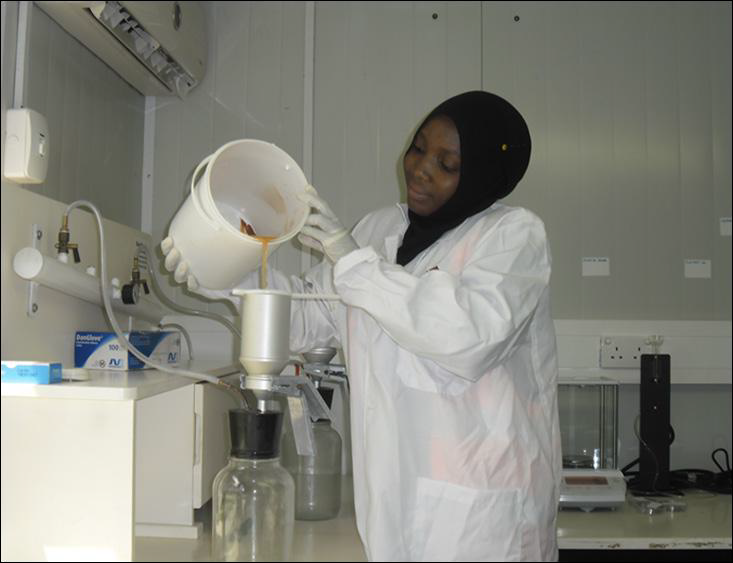During my internship at Base Titanium I got an opportunity to do environmental monitoring. Environmental monitoring is the long term measurement and observation of the environment to define status and trends Part of my responsibilities was to collect samples from the air, water and land in order to determine if any physical or biological factors are negatively impacting natural ecosystems and habitats.
As a team member of the Environment department I participated in routine environmental monitoring in order to reduce chances of environmental pollution, prevent occupational diseases and to ensure the communities surrounding the mine are safe and healthy to prevent conflict and promote a healthy relationship between the community and the mining project.
In order to determine changes or trends in the water quality over time the department involved me in regular water monitoring. Water monitoring typically involves collecting samples from the various sites and we did this weekly and also bimonthly in order to identify specific and emerging changes over time. I acquired practical skills measuring dissolved oxygen, temperature, oxidation reduction potential, salinity, Ph., alkalinity, turbidity and electrical conductivity.
I also had the opportunity to do radiation monitoring. Radiation monitoring involves the measurement of radiation dose for reasons related to the assessment or control of exposure to radiation or radioactive substances, and the interpretation of the results. At the Base Titanium, we undertook radiation monitoring to measure the gamma radiation levels not only in areas around the mine site but also along the transport route to where the ship loading is done. I also got an opportunity to practice dust monitoring at the mine site. This is mainly done to collect information on dust emission to the atmosphere. It is mainly done by multidirectional units that don’t use batteries, solar energy, or any external power source.The units provide a good means of capturing dust fall-out from different directions. We collected the units at intervals of one month after which filtration
is done, whereby water is filtered using a filter paper and placed in a pressure controlled vacuum filtration system.
Then we would place the filter papers in a petri dish and oven dried at temp of 50 degrees until the samples are dry. Collection of wildings is mainly done from the mother plant and preferably very young wildings are picked. The seeds that we collected we took them for a seed test in order to ensure they are of good quality. We then planted the seedlings in plastic bags composed of topsoil, coconut coir and manure mixed in the ratio of 4:1:1 respectively.
PROPAGATION
A propagator is a covered structure that is filled with soil used for germinating cuttings. We used it to plant tree cuttings which are difficult to get their seeds or seedlings. I learnt how to add a root stimulating hormone to the cuttings before it is planted in order for it to stimulate the chances of successful plant rooting. After the roots are matured enough, mostly after a month, we then planted them in the plastic bags
MONITORING OF REPTILES AND AMPHIBIANS
It involves the monitoring of reptiles and amphibians that is, snakes, lizards, frogs and chameleons. Monitoring is important because it is a health indicator and also it enhances our understanding of their distribution. At Base Titanium we did monitoring of reptiles and amphibians using traps which we observed for a week in every single month. Thanks to Ummah Initiative I was able to join Base Titanium and practice my skills as an upcoming professional environmentalist! To Colin Forbes, Juma Lumumbah, Mwanaidi and the entire environment department I sincerely appreciate everything you did to support my career growth!



























You must be logged in to post a comment.